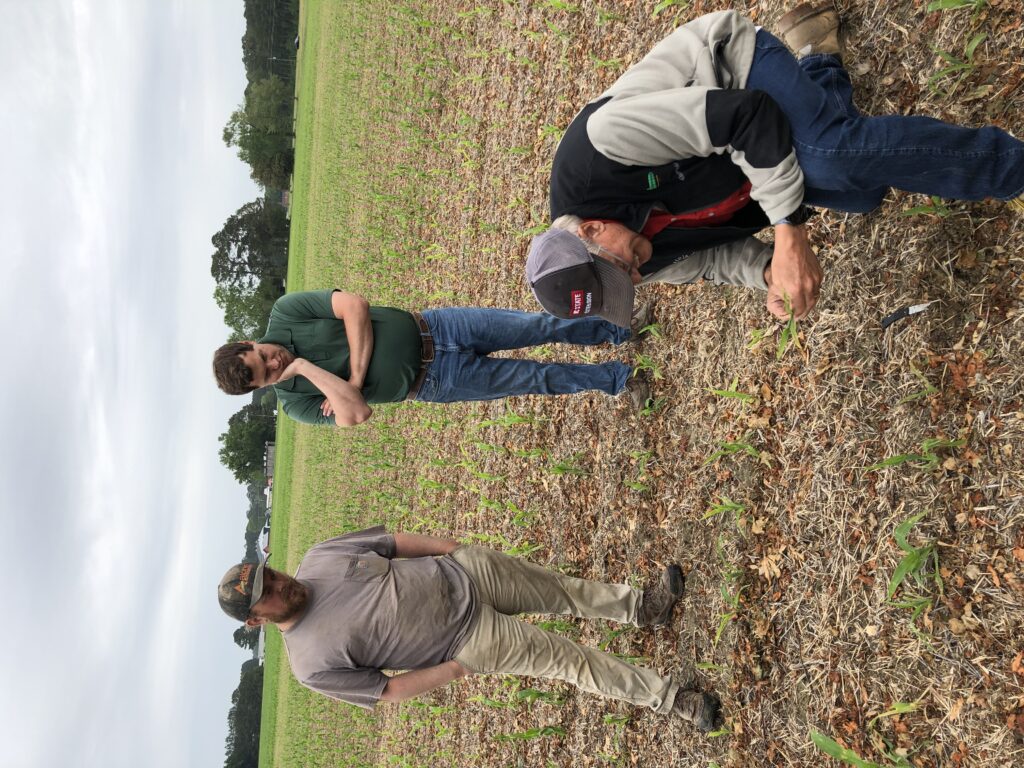Cooperative Extension Assesses Hail Damage in Pitt County
go.ncsu.edu/readext?936433
en Español / em Português
El inglés es el idioma de control de esta página. En la medida en que haya algún conflicto entre la traducción al inglés y la traducción, el inglés prevalece.
Al hacer clic en el enlace de traducción se activa un servicio de traducción gratuito para convertir la página al español. Al igual que con cualquier traducción por Internet, la conversión no es sensible al contexto y puede que no traduzca el texto en su significado original. NC State Extension no garantiza la exactitud del texto traducido. Por favor, tenga en cuenta que algunas aplicaciones y/o servicios pueden no funcionar como se espera cuando se traducen.
Português
Inglês é o idioma de controle desta página. Na medida que haja algum conflito entre o texto original em Inglês e a tradução, o Inglês prevalece.
Ao clicar no link de tradução, um serviço gratuito de tradução será ativado para converter a página para o Português. Como em qualquer tradução pela internet, a conversão não é sensivel ao contexto e pode não ocorrer a tradução para o significado orginal. O serviço de Extensão da Carolina do Norte (NC State Extension) não garante a exatidão do texto traduzido. Por favor, observe que algumas funções ou serviços podem não funcionar como esperado após a tradução.
English
English is the controlling language of this page. To the extent there is any conflict between the English text and the translation, English controls.
Clicking on the translation link activates a free translation service to convert the page to Spanish. As with any Internet translation, the conversion is not context-sensitive and may not translate the text to its original meaning. NC State Extension does not guarantee the accuracy of the translated text. Please note that some applications and/or services may not function as expected when translated.
Collapse ▲“When it rains, it pours”….. Sometimes that rainfall is accompanied by hail.
That was the case on Wednesday, May 10 when a slice of Pitt County received high winds, excessive rainfall, and record-sized hail. This event resulted in trees that were toppled, some tobacco greenhouses losing their plastic coverings, damage to other farm structures, and several homes reporting damage from ice that pelted their exterior.
Whenever a hail event occurs on Pitt County farms, Cooperative Extension is called upon assess the damage and respond to calls from farmers on the recommended course of action. That began on May 16 as the Pitt County Center began a campaign to visits with 9 county farmers representing about 1,000 acres of cropland that were impacted by last week’s storm. Since corn was the first crop planted this year in Pitt County, it was the crop that was reported to be hardest hit from the storm. Corn fields in the areas of Ballards Crossroads, Ayden, and Grifton reported damage due to hail.
Dr. Ron Heiniger, NC State Extension Corn Specialist traveled to Pitt County on May 16 in an effort to advise producers on managing hail damaged corn stands. When corn experiences damage due to hail, it is recommended that farmers wait 5 to 7 days before deciding if replanting of a field is necessary. This recovery period allows a more accurate assessment of the surviving corn stand. As Heiniger visited with 9 county farmers, he implemented a process that helped farmers to decide if a field needed to be replanted of if recovery of the existing stand could be expected.
The first step in evaluating a corn field that has been damaged by hail is to determine which plants will recover and which ones will not. This is determined by finding the growing point at the current stage of growth of the corn plant.
The growing point appears as a dome-shaped area of dense tissue at the base of the plant. If the growing point has a darkened color, the corn plant will not be able to sustain future growth. Small corn plants which have their growing points below the soil surface are almost always unaffected by hail events. Corn which is about knee-high has its growing point about 1 to 1.5 inches above the soil surface. The larger the corn, the more loss that can be expected as a result of a hail storm.
In addition to the health of the growing point, some hailed damaged plants may exhibit a “buggy whip” growth habit. “Buggy whipped” plants occur when the dead leaves wrap around the plant preventing the new growth from emerging from the whorl. If the leaves are severely restricted, the outer leaf tissue will be very tight and often prevents further growth of these corn plants.
Lastly, depending on the row width used at planting, by taking various stand counts in field based on 1/1000th of an acre, a percentage of surviving plants is then determined in order to calculate the remaining total population. A minimal population of 18,000 plant per acre is used to decide if replanting is necessary.
At the end of the day, it was determined that 84% of the corn fields that were evaluated would recover from this recent hail damage with no corrective action being required. Dr. Heiniger also discouraged any applications of a fungicide due to the fact that the injury to the corn would be bacterial and not fungal. Therefore, these plants would not benefit from such applications.
For a full description of the process used to evaluate hail-damaged corn stands






